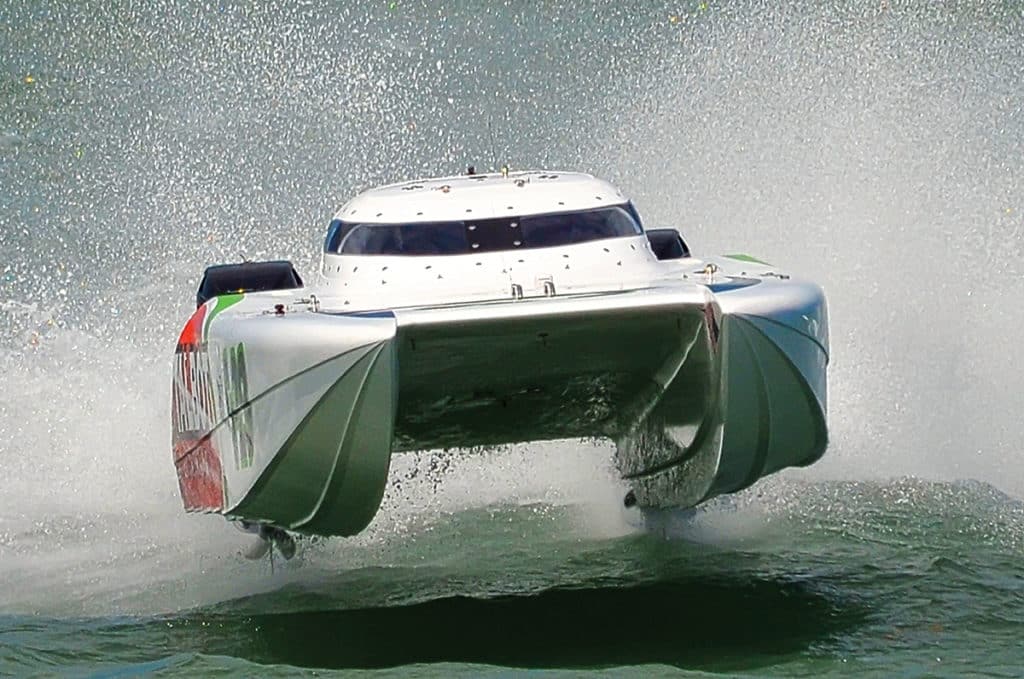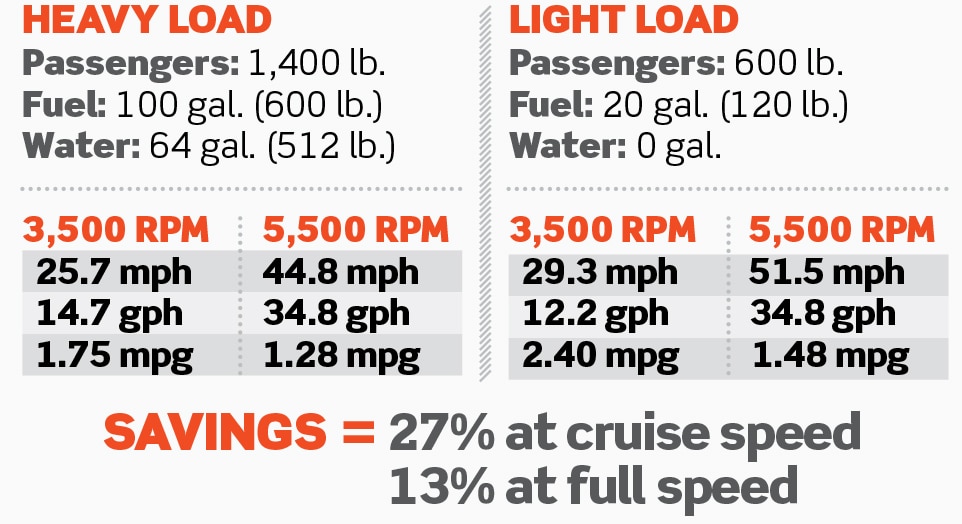
It’s a topic that many keyboard throttlemen love to debate on message boards and performance-boat forums. Sometimes they’re right. Other times? Well, you know, but power-to-weight ratio is a legitimate number, and knowing the figure for your boat can help you increase its efficiency or speed, depending on what you’re looking for.
It’s a straightforward calculation that can be done in horsepower per pound or vice versa. For example, let’s take a 5,000-pound boat powered by a 300 hp engine. The power-to-weight ratio is calculated by dividing 300 by 5,000 for 0.06 hp per pound. Or, swap the formula, divide 5,000 by 300, and it would be 16.6 pounds per hp.
Power-to-weight ratio most often comes into play when deciding how many motors one wants on a new boat or when repowering. For example, if you’re looking at a center console rated for a maximum of 300 hp, should you go with a single or twins? Let’s look at the numbers. A single 300 hp Mercury Verado weighs 635 pounds. A 150 hp Mercury FourStroke 150 weighs 455 pounds. Double the weight and the twins would tip the scales at 910 pounds. The single 300 has the advantage over the twin 150s at 2.1 pounds per hp compared to 3.03 pounds per hp.
Engine weight is just the beginning. Don’t forget that you also need to double the rigging and add a battery, which would probably add another 100 pounds to the equation. If you’re considering two-stroke outboards, remember to factor in the weight of the extra oil reservoir and its contents. Oil weighs approximately 8 pounds per gallon.

Last fall, Grant Bruggemann at Grant’s Signature Rigging in Sarasota, Florida, put the power-to-weight ratio to a real-world test in a 32-foot Skater catamaran. It was originally powered by triple 300 hp Mercury Racing 300XS two-stroke outboards that weigh approximately 505 pounds each. The owner wanted to rerig the boat with a pair of Mercury Racing’s new 400 hp Verado 400Rs that weigh 648 pounds each. The numbers show that the triple 300 hp engines (900 hp total) have a power-to-weight ratio of 1.68 pounds per hp, while the twin 400s (800 hp total) calculate to 1.62 pounds per hp.
With the triple 300XS outboards, the boat ran a top speed of 103 mph. With the twin Verado 400Rs turning a pair of 32-inch modified Bravo One propellers, the Skater 32 ran the exact same speed with engines on the rev limiters. Certainly, the reduced drag of one less gear case in the water played a role, but for those who want to optimize speed (and efficiency), power-to-weight is a key factor. With extra prop tuning, Bruggemann figured the boat would run at least 110 mph.
Converting from the triples to twins saved the boat about 345 pounds thanks to the subtraction of fuel and trim pumps, a battery and required rigging. Switching from the temperamental two-strokes to the smooth-running four-strokes with digital shifting also made the boat much more manageable. Think of it as addition by subtraction.









